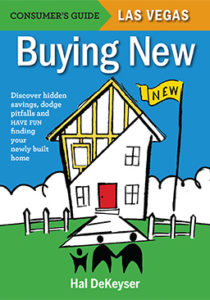Las Vegas is a relatively small city for a metro area as well known as it is internationally, both in population (slightly above 2 million) and land mass. An advantage of that, compared to bigger, older or denser areas like Phoenix or Los Angeles, is that it’s relatively easy to get around. That means your options about where in Vegas to live are expanded.
What Las Vegas has in great supply – again, particularly compared to other Southwest metros – is affordable (admittedly, a subjective description) and accessible new-construction master-planned communities and a plethora of smaller, single-builder in-fill neighborhoods. They range in price from the low $200s to the millions, with most of them under $500,000 base price.
Las Vegas, as mentioned, is a relatively easy commute. Where you work or travel frequently is important. You should prioritize not only what your drive will be but also what you want near you or likely to be near you, like certain shopping or schools – and what you don’t want around you , like airplane noise or tough neighborhoods. A good real estate agent should be able to point you in the right direction.
Here are considerations:
- Even if you don’t have kids, the quality of schools fits into most people’s equation, so it will be a selling consideration. (You can find how well Clark County School District schools perform by going to nspf.doe.nv.gov and select “Clark” on the dropdown in the upper right.) Public charter and private schools, and perhaps even post-secondary, technical or other schools might be on your list.
- Freeways and roads. The 215 isn’t complete all the way around, but it might be by the time you’re looking to sell, if you’re an average homeowner. But make sure you have a good path to where you want to go.
- New developments tend to be on the outskirts, so some of them don’t have the stores you might want. But rooftops drive retail, and sometimes commercial developers have plans for centers near you. (Warning: Plans are not certainty.) Some people want to be by a Costco or Whole Foods or Trader Joe’s (and you’re undoubtedly going to spend time at Home Depot or Lowe’s). If this is important, map where the nearest ones are.
- Entertainment. When we first came to Vegas, we couldn’t figure out where the movie theaters were until someone pointed us to the local casinos. If that’s part of your life, know how far your favorite places are.
- What your family is into. If you’re boat people and want to head to Lake Mead on summer weekends, you’re probably better off in or near Henderson than in Summerlin or Skye Canyon. If you want to hit Mount Charleston, it’s the other way around. If the kids are into soccer or baseball and your weekends are filled with that, don’t plant yourself on the wrong side of town. If you go to LA all the time, think south along 15.
- Work, family, friends, airport, Strip. Make sure you know where you’re buying compared to where you want to go.

Get free guide book,, Buying New, at BuyingNewBuild.com.
Free consumer’s guide on buying a new Las Vegas home
This article was taking from Hal DeKeyser’s book on how to buy a new home in Las Vegas. It walks buyers through all the steps in the process, from figuring out what kind of home you want to finding financing, shopping the models, monitoring construction to what you do in the first year. It’s a helpful guide even for those who have done this before. To get a FREE copy , simply email Hal.DeKeyser@gmail.com with “I want the new homes book” in the subject line. (No obligation.)







